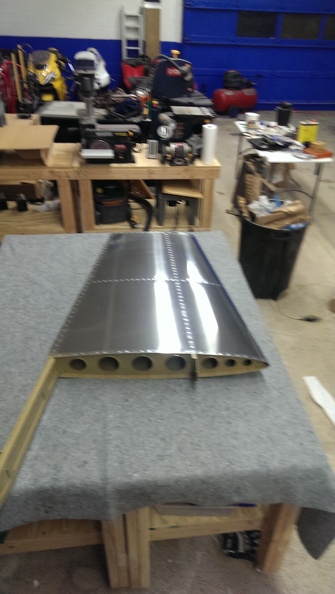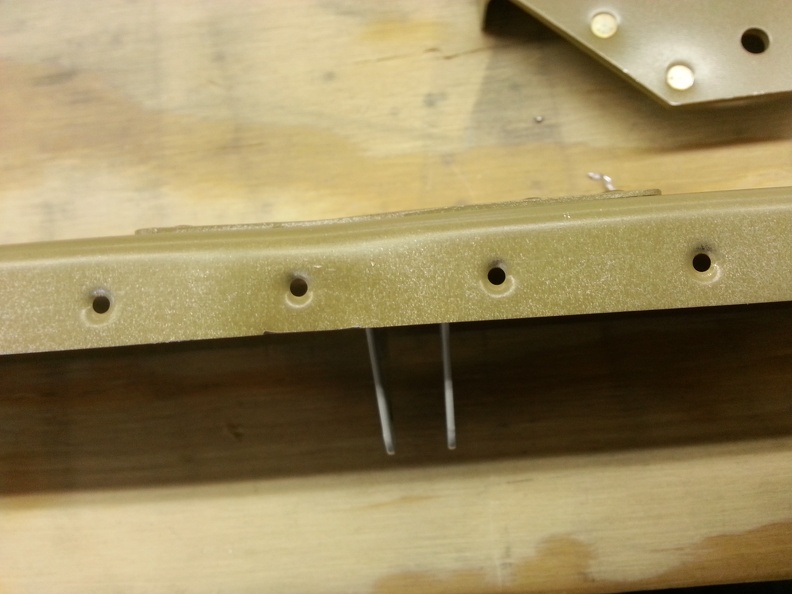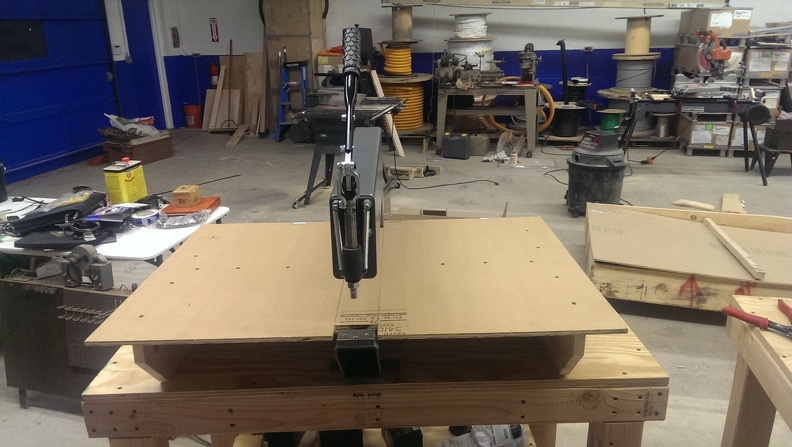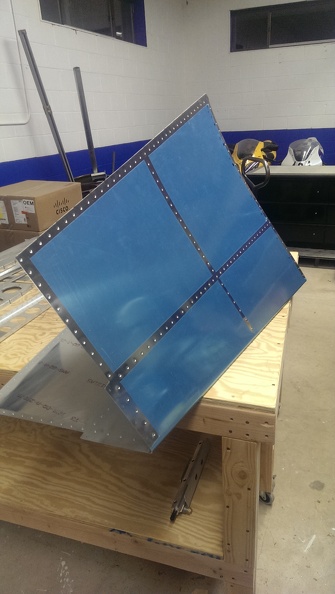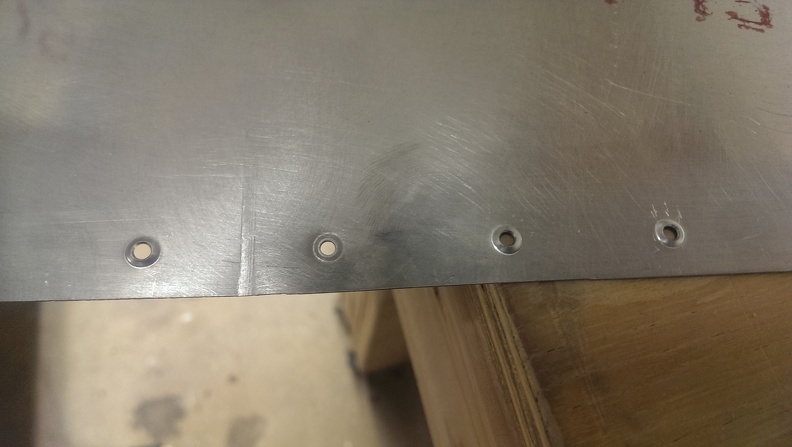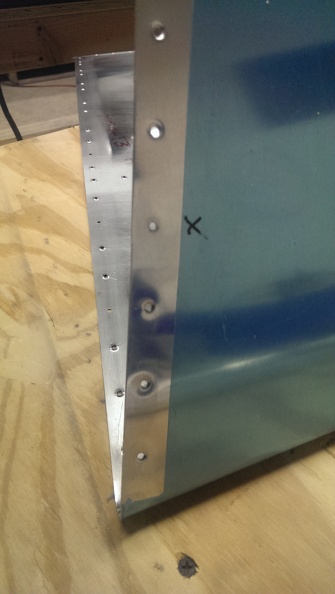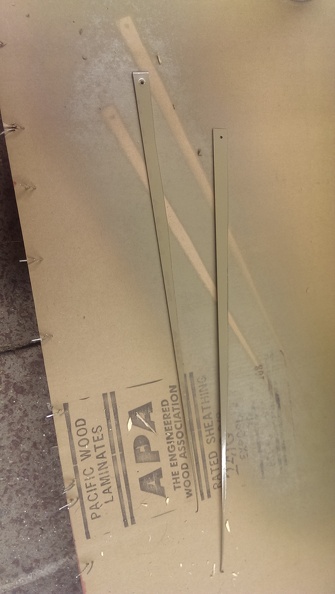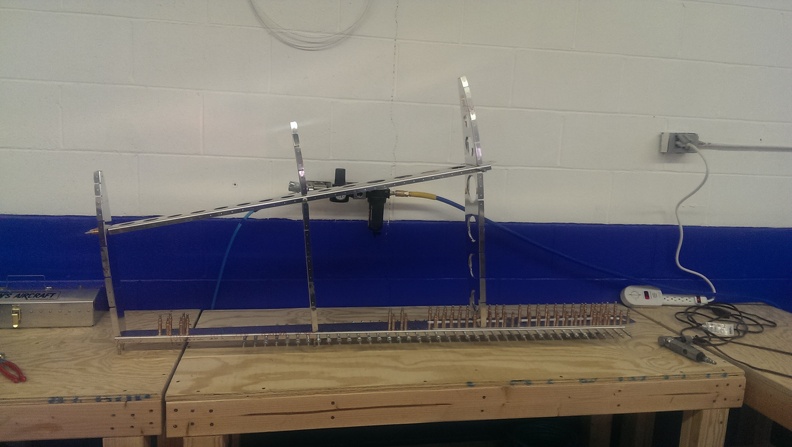Promptly at 9:30 the nice fedex lady dropped off my new VS Rear Spar and some other parts. I promptly went to work and started cleco’ing and match drilling. After deburring, counter sinking, and dimpling, I washed the parts with soap, set them in acid for 30 minutes, and primed them. What I like about SEM EZ Coat is that is practically dry to the touch within 30 seconds of applying.While waiting for the acid to set, and the primer to dry. Corey & I worked about riveting some of the internal hard to get to rivets on the skin. (This is a bit out of order, but we had time to kill). Once we completed the forward spar, Corey had to go home. About this time I had determined the primer had dried long enough and began to process it back together. Its amazing how much nicer it looks the 2nd time around.
Once I had this completed I began to attach it the skeleton. Once I made sure everything would line up, I used my offset rivet set and buck’d them into place. Then I proceeded to finish riveting the skins to the skeleton. This went relatively smoothly all though i had to drill out a few rivets here and there. I grabbed a moving blanket from one of the many I acquired when renting a uhaul trailer earlier this year to prepare to protect my newly minted airplane piece. Next I took off the blue plastic. I have no desire to let this stuff sit on here and become semi-permastuck.
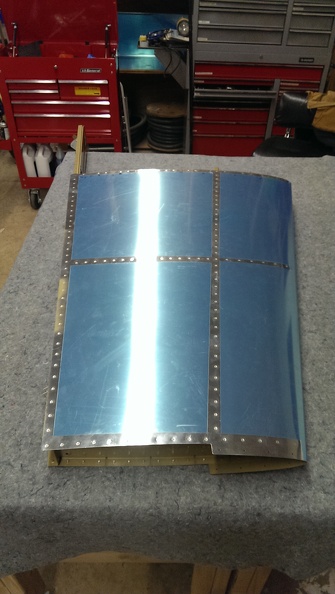
And the obligatory selfie to prove that yes I indeed build this part



